Lisa Niver's Blog: We Said Go Travel, page 409
March 17, 2014
Thursday in Ethiopia
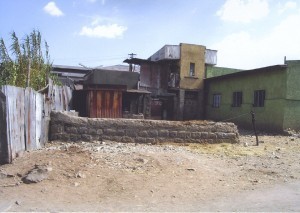 It is Thursday. We are in Ethiopia, a falling-down bearing-up sort of place where every day, it seems, is a story. Even today, when there is nothing for us to do but walk to the main road in search of a mobile card for my cheap borrowed cell phone. We walk through the alley, itself a story, what with the potato sellers and discarded carcasses and brilliant yellow chrysanthemums daring to grow against a scorched concrete fence. I bend to pull a thorn from my flip-flop, and when I straighten up I am nearly bowled over by that funny guy in the dirty red Nordic sweater, wrap-around khaki skirt and mismatched rubber sandals. Afewerek. He hurtles at us in a cloud of orange dust, waving a five-foot piece of sugar cane like a banner. It is for Robel, he shouts, straight from the farm of his nearly dead father.
It is Thursday. We are in Ethiopia, a falling-down bearing-up sort of place where every day, it seems, is a story. Even today, when there is nothing for us to do but walk to the main road in search of a mobile card for my cheap borrowed cell phone. We walk through the alley, itself a story, what with the potato sellers and discarded carcasses and brilliant yellow chrysanthemums daring to grow against a scorched concrete fence. I bend to pull a thorn from my flip-flop, and when I straighten up I am nearly bowled over by that funny guy in the dirty red Nordic sweater, wrap-around khaki skirt and mismatched rubber sandals. Afewerek. He hurtles at us in a cloud of orange dust, waving a five-foot piece of sugar cane like a banner. It is for Robel, he shouts, straight from the farm of his nearly dead father.
Robel is six. He is appropriately stunned by this pronouncement. He reverently shoulders the sugar cane and decides not to look at me, in case I tell him he can’t eat it. Mothers are like that.
“But wait,” Afewerek says through his missing teeth, a little bit of drool putting an exclamation point behind his excitement. “I have more.” With a flourish he pulls out a matted woolen scarf with Ethiopia stitched down the middle, which he ceremoniously drapes around Robel’s neck. Then he winks at me and pulls out a red and gold clay incense burner, cracked through and burnt black. From his sweater emerges a ball of yellowed grass and twigs, tied up in a ripped corner of a plastic shopping bag. “This is good medicine,” he insists, pressing the ball into my hand. “From the rural. When you have bad day, burn it here in this nice pot, and, look, you are smiling again.” He smiles.
I could use a little smiling. And Robel is ecstatic about his giant sugar cane. But this is an awfully generous gift from someone who sleeps out too many nights, and whose only indebtedness to us is a chance meeting on Bole Road yesterday morning. His gift, however questionable, comes out glaringly in our favour. I thank him profusely, asking if I might, perhaps, compensate him.
“No, no, it is a gift. No money. But okay. A little bit. Okay, you give me some money. Let’s say, how about 200 birr? It’s not much, but I think for all this nice gifts, that is okay. Okay?”
Not really okay. The lot wouldn’t fetch thirty birr. But he’s not selling it to me, he’s accepting my offer of compensation. You can’t really haggle over a gift. Can you? So I say, without any conviction at all, “Gee, that sounds like a lot,” to which he replies, “Yes, yes, I am very generous.”
Now what? The sun is high, a dense, searing weight flattening us against the airless afternoon, drawing dull swarms of flies to buzz at the sweat around my ears and neck. Horns are blaring in their never-ending cacophony of traffic talk, and I watch, momentarily transfixed, as a threadbare brown donkey, head low, endures a slow-motion thrashing with a thin strip of tire, wielded dispassionately by an old man in a blue suit. Robel is squatting in the dirt, trying to chew the filthy end off the sugar cane and ingesting, undoubtedly, a million trillion parasites. A dog barks, hoarse and half-hearted.
I squint at Afewerek. He grins back, showing his wide grey gums. I know he is scamming me. He knows he is scamming me. But I don’t want to call it, because as each unremarkable second leaks away, as life exposes its ordinary self on all sides of me, I am struck by a slow sense of privilege and delight. I’m enjoying it. The dying father, the good medicine, the outstretched palm, dry and insistent, have all conspired to catch us in a pause, stilling the clock on this nothing sort of Thursday afternoon and pulling us intimately and inalterably into African everydayness. This is it. This is why I’m here. To stand in this potholed scene, to itch with heat and flies, to commiserate with this donkey now squeezed through a crack in the corrugated tin between two alleys, his exposed rump the last visible remnant of his tragedy. I am here, with my son, with his sugar, pulled from the exhausted red earth of this wickedly beautiful worn-out country, and it is enough. It is more than enough, more than I have room for, more than I knew existed.
I hand Afewerek the twelve dollars. For his lovely broken things, for his thwarted generosity, for his gift of grass and halted time, which, however questionable, has come out irreversibly, inarguably, in our favour.
About the Author: Jennifer Clark aspires to take her young son everywhere in the world, at least once. They have thus far travelled to thirteen countries together, and are hoping to reach Antarctica next.
Thank you for reading and commenting. Please enter our next Travel Writing competition and tell your story.
The post Thursday in Ethiopia appeared first on We Said Go Travel.
Oh, Summer Days in the Algarve

Photo Credit: HereIsTom via Compfight cc
I’ve been toying with the idea of living abroad over the summer. The idea sprang into my mind last year as the dreaded winter approached. Luckily, we’ve been blessed with one of the warmest winters that I can remember- and a total of a week of snow on the ground. Now that spring is gleefully caressing my windows, I am on a mission: to find the best vacation spot for our summer. And must be abroad and somewhere we’ve never been before.
As I am planning to also work while away, villa holidays in Portugal would be the best option for me. I want to have the flexibility to arrange my day exactly how I want it to, but I also want to be close to the fun spots.
The Algarve is the southernmost region of Portugal and is the country’s most popular holiday destinations. Being located on the Atlantic coast, it boasts 200 km of clean beaches. Add to this that compared to other beach holiday spots, it’s relatively cheap, you’d soon understand why many people choose to come here and spend their summers enjoying the sun, sea and sand.
Although time spent on the beach can be magnificent for many…for me it just isn’t enough to make me giddy. To spice things up, I am planning a sort of an around Europe trip to get to and from Algarve. And I’d want to be in Algarve for our wedding anniversary (which is in May).
Faro is the airport which serves the area but Lisboa can be a great option as well. A flight from Budapest to Lisboa in mid-May costs from $200 one way / adult. But with a return by the end of the month, it would be around $320 / adult (and direct flights).
I am really looking forward to visiting Sintra – I have a thing for castles and this one’s been on my mind for a pretty long time. The of course, Porto is not to be missed.
I’ve been a major fan of the Mediterranean cuisine for ages and had a chance to experience it first hand both in Greece and Italy. As for the Portuguese cuisine, closest I’ve come to tasting it was making a paella from a recipe given by a friend of mine. I loved it.
But Portuguese cuisine is so much more than just seafood. Many spices are used and that’s because of the country’s former colonial history. Cinnamon, vanilla and saffron and chilli peppers are among the staples. And so is the olive oil. Breakfast is pretty similar to what you’d call “continental breakfast” in hotels (bread, butter, cheese, ham, coffee, milk). Lunch comes around mid day (1-2 p.m.) and dinner comes in the late evening (8 pm) – true to the Mediterranean style. The chouriço (chorizo) sausage, salt cod (bacalhau) dishes and caldo verde (a soup) stand out among the local specialties.
Generally speaking, the Mediterranean cuisine is not using a lot of meat. However, the Portuguese like to mix it in dishes. Tripas à moda do Porto, for example, is a dish made from tripe and white beans and dates as far back as the 14th century. They also eat roasted suckling pig and steak.
The post Oh, Summer Days in the Algarve appeared first on We Said Go Travel.
Industrial Revelation in the UK
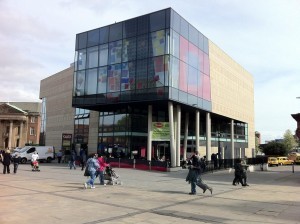 Inspiration. That’s easy, isn’t it?
Inspiration. That’s easy, isn’t it?
Eating the freshest sushi that Tokyo has to offer. Feeling the cleansing spray of Iceland’s mighty Gulfoss waterfall on your face. Watching a rainbow arc over New York City from the top of the Empire State. Each pretty inspiring, in their own way.
All of them I’ve done and consider the time wisely spent. Any of them I’d do again in a heartbeat, but they’re not the work of a moment. They are all places and activities on which I chose to spend my time (and money!) and found inspiration as a result.
Where, though, is the place that does the opposite; that inspires me to spend my time? The place I can go whenever I feel like it, in the knowledge that not a second will be wasted? What about a small city – just quarter of a million people – in the middle of the United Kingdom?
Derby was the birthplace of the Industrial Revolution, and the River Derwent tickles the edge of the city centre as a reminder of what drove its manufacturing. It’s not 3000 miles away, or even 300 miles. Derby is practically on my doorstep, just 30 miles from my home, and within the confines of its blank concrete ring road is something that sings to my heart.
That something is a bright cultural outpost known as QUAD, whose artistic vibe is seemingly at odds with the mechanical industry of old. Its modern angular structure combines a two-screen cinema, a social café, a vibrant gallery and a creative workshop.
I first visited on a cold November night in 2010, when drizzle fell on the lifeless market place outside. The wet sheen on the stone paving did nothing to recommend Derby as a destination, or to try and lift my mood. I sat in the café a broken man – one who longed to write but couldn’t find the words. My creativity was withered and limp, dreams lying ruined and torn asunder by a lack of confidence.
I went to QUAD at the behest of my closest friend, to chat and drink and forget about thwarted ambitions. To my surprise, I found an atmosphere of quiet productivity. People worked on MacBooks, fed by coffee and whatever took their fancy from the freshly prepared menu. Not one of them appeared hurried or under pressure and the calm was infectious. James and I talked while rivulets of rain left slug-like trails down the windows. We weren’t there to work but, crucially, I felt like I belonged.
The conversation was good, the creative buzz even better. The true source of my inspiration, however, was a chair. Neatly upholstered in warm red fabric, it was one of several hundred that drew like-minded people to sit in front of a screen bigger than any laptop.
QUAD is no faceless cinema chain feeding mainstream dross to the unquestioning masses. It provides a thoughtful programme of films: some fun and frivolous, some sincere and serious, all high in quality and artistic merit. When expensive journeys across multiple time zones are out of reach, the cinema screen gives all of us chance to be a citizen of the world; to experience other cultures and ways of life through the common visual language of film-making; and to expand our horizons while we laugh, cry or gasp in surprise.
You can go to a place and be inspired because it is awesome and unique on Earth. You can be captivated by nature’s magnificence or wowed by the skill of foreign craftsmen, but unless you live a rare kind of life those are only temporary feelings. The mundanity of daily routine is just a return flight away.
True beauty is found in life lived to its potential, regardless of geographic circumstance or economic wealth. James showed me a place where it is possible to flex creative muscles without feeling ashamed of doing so; a place that wants people to experiment and make art without fear of failure, and accepts them for their willingness to try.
The beauty of independent cinemas and cultural hubs is that they exist to serve their communities and are exactly what you choose to make of them. They can be a constant in your life, providing inspiration whenever you choose. The only place you can stand atop the Empire State is New York City; fulfilling your potential can happen right where you live.
Yes, I’ve visited cinemas in London, Dublin, and Copenhagen, but QUAD has my heart. In your quest for inspiration, I hope you can discover your local area like I discovered mine. And if your wider travels one day include Derby then be sure to grab a coffee, stop by my table and say hello.
I’ll be the guy smiling while he writes.
About the author: Paul Forrester is a writer who also runs, which is why his blog is called Writer & Runner. Now he knows how to write he is developing various book ideas; he has always looked for new places to visit.
Thank you for reading and commenting. Please enter our next Travel Writing competition and tell your story.
The post Industrial Revelation in the UK appeared first on We Said Go Travel.
March 16, 2014
What African Adventures in Mozambique Taught Me
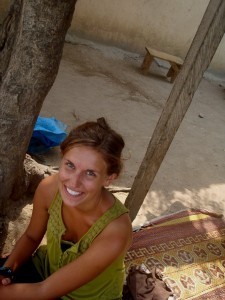 Africa. While there, I am acutely aware of my impermanence on the continent. Beginning from that foundation limits my tendency to procrastinate; it pushes me to live each day fuller. However, as I reflect on my relationship with the continent I wonder whether it is the physical space – or something more – that inspires me to live immersed in each day and without regret.
Africa. While there, I am acutely aware of my impermanence on the continent. Beginning from that foundation limits my tendency to procrastinate; it pushes me to live each day fuller. However, as I reflect on my relationship with the continent I wonder whether it is the physical space – or something more – that inspires me to live immersed in each day and without regret.
I first left Canada for Uganda as a volunteer, with a head full of notions spawned by Hollywood. In thirty days, I changed in a profound way. For the first time, I began to question my lifestyle, my relationships and most of all, my aspirations. Throughout that month, I challenged myself to live each day submerged in my work and the culture around me. My journal reminds me of my determination to appreciate the sour taste of posho, my enthusiasm for a ride on a boda boda, and my obsession with feet perpetually stained red with Ugandan soil.
Everything was extreme in that first month, and it propelled something new into motion. Upon returning to Canada, I found the strength to begin a fight against a long-standing eating disorder. Formerly a reserved introvert, I found the motivation to participate fully in my education. I found the inspiration to involve myself in something bigger than (and other than) myself. I was 19 years old and, in retrospect, obnoxiously enthusiastic.
I returned to Africa a year later, this time as a painstakingly optimistic intern. I secured a placement in a primary school at a West African refugee camp. Over the course of three months, I found the determination to collaborate with local organizations and build an international non-profit that would advance local initiatives. Under the shade of mango trees, I devoted each of my precious ninety days to building this project so it could be sustained it through my impending return to snowy Canadian winters. Having faltered during the year with my eating disorder, I once again found motivation to eat palm butter, cubbish stew, fufu and pepa kala. The parallels between nutrition and human capacity were so abundantly clear that it became a primary tenet of the emerging charity. I have never suffered from a shortage of irony.
In the years following, I matured as I explored Africa. I learned self-sufficiency and independence while stranded for 21 days in Egypt. Optimists and pessimists alike encouraged me, each of whom was vigorously pursuing a different dream. That said, corruption, and deceit became reoccurring themes in my day-to-day, and a fatigue began to set in. I returned to Canada temporarily, only to grow restless again.
This time, I had fallen in love. He was moving to Mozambique, similarly restless, looking for more from life. He envisioned opening a safari lodge; I hoped for inspiration and a new path. There was no defined plan for return – we wanted to build a life. It felt natural.
For a year, I bounced between the familiar feelings of extreme invigoration and fear. I tackled the ambiguity one full day at a time, plunging myself into Mozambique’s turquoise waters. We bought a tiny Pajero Jr. We adopted an Africanis puppy. We learned Portuguese. We explored nearly every nook and cranny in search of a life. By navigating untrammeled bush with sporadic rests on dhows sailing through archipelagos, we found total bliss. Bliss, which unfortunately I soon realized, was fleeting.
As our relationship came to a close, I crumbled. Paralyzed by the fear of an ending, I felt my ability to embrace each day dwindle. Anxiety consumed me. A preoccupation with the future had transformed me into a person I never wanted to be. Thankfully, his irritating comfort with finite time showed me how to salvage the final 25 days of adventuring together.
Having since returned to Canada, I feel my ability to live in the present slowly returning. With each day, I work to worry less about the next. Fewer unwritten emails to him rattle around in my head, questioning what happened and what will happen next. Less of my time seems wasted on hypotheses. I try, as hard as I possibly can, to be present for those around me today – to be mindful of the opportunities I have in front of me. I go to yoga… a lot.
And with that, my answer shifts. No longer do I believe that Africa is a place that inspires me to spend my time consciously. For me, it is a state of mind – one cultivated over years in Africa, which I can carry forward. It took a few hard shakes, a couple of hard falls, and many tears to realize this, and I am sure there will be more to come before I truly live each day fully and wisely, independent of my geographic location.
About the Author: Lindsay Seegmiller is a curious adventurer/travel writer/avid researcher with a passion for people and open spaces. She has traveled Africa, the Americas, Asia and Europe both personally and professionally, learning from individuals along the way.
Thank you for reading and commenting. Please enter our next Travel Writing competition and tell your story.
The post What African Adventures in Mozambique Taught Me appeared first on We Said Go Travel.
Ayers Rock, Australia: The wonder of nothing
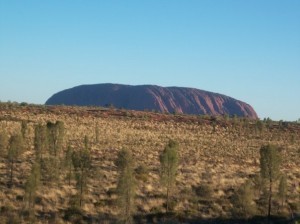 For the dung beetle – a native of this land – the race was on. Before long, the midday heat would ignite the earth so much that the tiny soles of his feet could barely tread the burnished ground below.
For the dung beetle – a native of this land – the race was on. Before long, the midday heat would ignite the earth so much that the tiny soles of his feet could barely tread the burnished ground below.
And so speed was of the essence.
He darted to and fro – a daily and punishing ritual – because he knew that when his work was done, he would be rewarded with escape from the brutal rays.
I was not a native. In fact, this was the first time I had ever been to Australia, and the parched landscape of the outback held no fear for me. Only wonder.
So, since I awoke some seven hours previous at 4am, I had simply walked and watched. And from the time this land woke from the darkness of night, I had felt like a tiny shard, wilfully trapped inside an ever-turning kaleidoscope – the emerging daylight changing the terrain with every moment that passed.
Once the sun had gained her daily dominion however, the kaleidoscope would come to a juddering halt – the mesmerising psychedelia replaced by a solitary block of colour.
This was why they called it The Red Centre.
It was nearly 100 degrees but my adventure, unlike that of the fast-escaping dung beetle, was only just beginning.
I’d arranged to meet my guide at the cultural centre. This is where I’d start yet another trek and embark on a much needed crash course in Aboriginal culture. Here, Aboriginal artefacts, each bearing an intricate design, hung from every wall.
“They all tell a story. Aboriginal art is all about stories”.
The voice was authoritative and, as I turned to face Apari, I immediately noticed an austere look. His lean face was lined with wrinkles and a starched khaki uniform completed his almost military look. This must be my guide.
“We need to leave now. Let’s meet by the wall”.
He spoke in syncopated rhythms that had a hypnotic effect so I, and the other eight members of our group, followed him obediently.
We set off. No one cared in what direction.
The fierce crimson of the desert undulated as far as the eye could see. It was punctuated by nothing; though through the heat haze, minute rainbows of dust particles could be seen trailing our every footstep. Apari promised that beyond the horizon was a local source of water. That was unimaginable. There was no oasis here. He told us, too, of the vegetation that was important to Aborigines – the mulga, for instance, a tree whose bark could be used to make tools and catch termites. But here, in this infinite desert, I didn’t believe in trees.
Not that the vast emptiness wasn’t appealing; it had seduced me from the moment I laid eyes on it. And even now, at the height of the day and at the mercy of 116 degree heat, I longed to continue walking.
Apari’s sudden announcement that we would be taking the “express route” interrupted my wish, but when I looked up to see the gigantic eyes of Katka – one of the camels that were waiting for us – I was content with my new mode of transport. She bowed obligingly and our journey took on a new pace.
We must have been trekking for a long time.
The orb of the sun was dimming all too rapidly, and I was thrust back into my dazzling world of colours.
“We’re here” came Apari’s nonchalant declaration. And as Katka’s gait slowed and came to rest, it was there.
Amidst the recumbent ground, it soared.
“Uluru. Ayers Rock ”.
The reverie was complete. There, in that moment, I could fathom nothing but understood everything.
We stayed for a while, transfixed by the beauty of this natural giant. I remember thinking how ironic it was when Apari told us that the word “Uluru” had no actual meaning in the Pitjantjatjara language.
Time passed all too quickly there, and yet was non-existent.
Though I was reluctant, the time came to let Katka turn her back on Uluru. She dropped her head, as if to mimic my disappointment at us leaving and resumed her steady pace. We headed grudgingly towards reality.
On our return, the sky took on its first hues of ebony. It would soon be flooded by night. Then, and only then, did I feel the first hint of fatigue.
I remembered the dung beetle, the fearful native who would probably be just waking to start his frantic day. Now he would take his opportunity to scuttle beneath the darkening heavens.
For a moment, I envied him.
About the author: Miriam Thomas graduated in 2006 and spent several years in teaching. She has travelled across Australia and New Zealand and has a strong desire to visit Japan in the near future. She currently works in Milton Keynes and is keen to pursue her love of both travel and writing.
Thank you for reading and commenting. Please enter our next Travel Writing competition and tell your story.
The post Ayers Rock, Australia: The wonder of nothing appeared first on We Said Go Travel.
When Pondicherry Missed a Cyclone
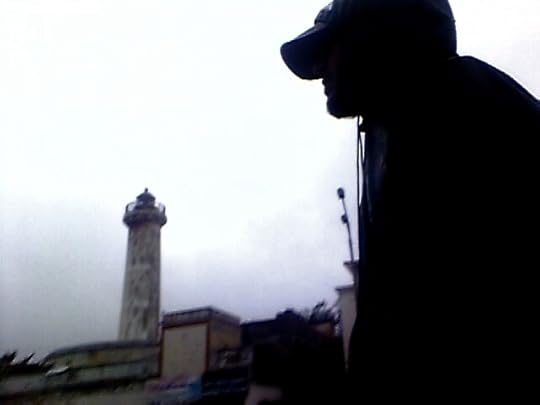
The Old Lighthouse in the Eye of a Storm
A Very Severe Cyclonic Storm named Thane clobbered the former French vestige of Pondicherry (India) on the 29th and 30th of December, 2011. Ninety year-olds swore they never witnessed a fury this violent and hysterical. There was no systematic tracking of the course the killer was about to take, and apparently everyone just knew that was a ‘big storm’ coming up. The result was death, doom, uprooted trees, shards of glass and blown rooftops flying across unimaginable distances before crashing onto the ground.
Nearly a year later in October 2012, a friend who works at the Lycée Français (French School) told me that the school would be closed for the next three days because the French embassy had got information of another impending cyclone. This one was to be called ‘Neelam’. Every French institution in Pondy was instructed to declare a series of holidays in a preventive measure to safeguard its employees. Funnily, my Tamil local friends had not the slightest inkling of Neelam, and it was only much later that the buzz had gone around.
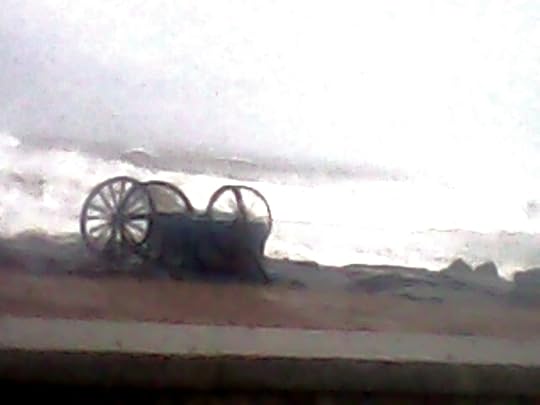
Alone at Sea
The build-up to Neelam was in place at least 3-4 days earlier, forcing us to spend restless nights listening to the sea groan like a monster in pain. A real groaning sound which I can’t quite describe! The Bay of Bengal was randomly textured and layered right until the horizon with no coherent color progression: brilliant aquamarine, bottle green, turquoise, a sickly deep grey and the white fermenting surf all forming parallel lines.
It was the 1st of November, and all through the morning, the promenade was brimming with spectators who watched the desperate waves break an alarming halfway into the sea.
Even those who suffered the fury of the previous year’s Thane could not be stopped from venturing onto the seafront to check the conditions. One such curious man slipped and fell into the sea and drowned. Overturned food carts stood desolate and abandoned by their owners. By afternoon, the sea-groans rose several decibels and the waves ripped into the promenade which was quickly cordoned off by police driving around making announcements on the PA. At this point, the crowds had to secure their vantage viewing points from several meters behind between the buildings.
You would think that people would willingly want to secure their lives. But there still exist a few men and women who love being in the eye of a storm (literally). These guys defied all police orders and ventured out close to the rocks to get pictures of themselves against the backdrop of the restive froth fest.

Yes, Get me Against That Breaker
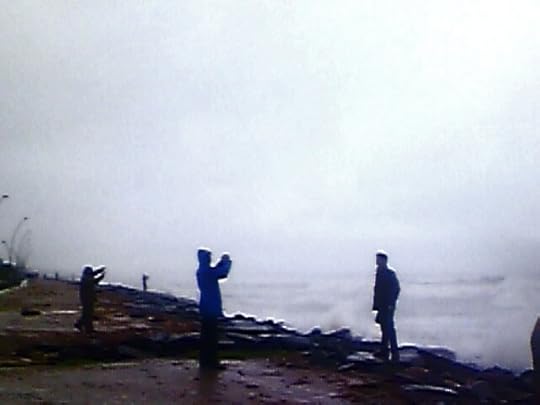
Get ‘Em
Even as the cops frantically blew their whistles and personally stepped onto the rocks, a few lovers refused to budge. The life of a policeman certainly can not be simple!

Let’s Stay Put
After a while, the promenade was considerably cleared and things seemed under control again.
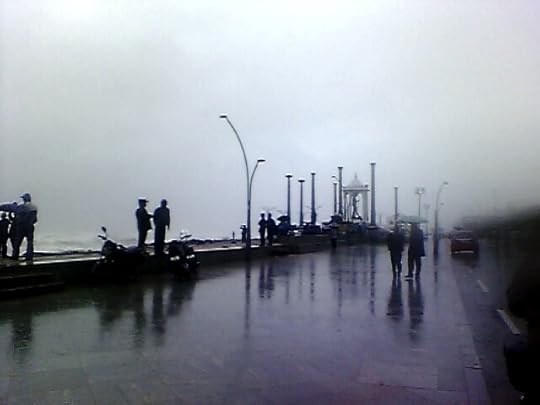
A Clearer Promenade
We walked down to the north end and into the fishing village. There were no cordons or cops to keep the villagers in check. A few fishermen had even dared to take their boats out that dawn. It was close to 4 pm and there they were — groups of them huddled in absolute silence. Their frail, thatched huts built from scratch after the previous years devastation, stood precariously but defiantly as the wind whimpered. We asked if they didn’t fear losing their livelihood all over again.
‘No,’ they said, ‘We never moved our belongings and families out last year, and we are not moving this time either. If the storm has to land on us, it will.’
This wasn’t disdain or a lack of respect for the power and unpredictability of Nature. This was something else I could not quite fathom. The imagery is still so vivid– Men of the Sea staring pensive and unblinking into their eternal playground with an inscrutable expression in their eyes.
The day wore on and the rain clouds decided they’d had enough. We finally heard that the cyclone made landfall at Mahabalipuram, a sea side town up north along the coast.
Pondy was spared this time around.
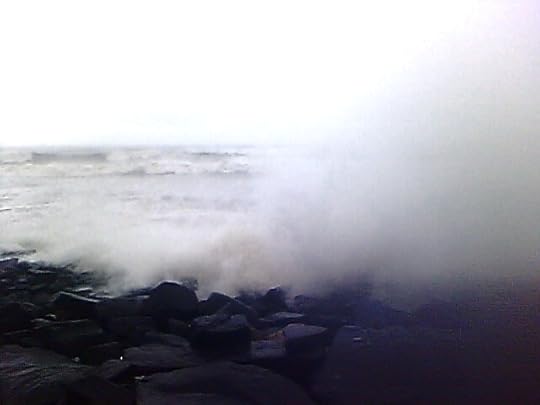
Where’s the Sea?
The post When Pondicherry Missed a Cyclone appeared first on We Said Go Travel.
Getting lost in time in Indonesia.
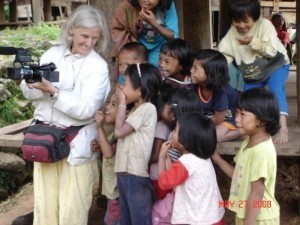 “I’ll show you beautiful, unspoiled Simbuang, “Stanis assures me. He is an anthropologist who hails from Toraja, Indonesia and has helped me interview mothers of young infants, several To Pakianak (traditional midwives) and bidans (contemporary midwives), and To Minah Tato Dena, a spiritual leader of the people who practice Aluk to Dolo, the religion of the ancestors. According to Stanis, Pong Bembe, our destination in Simbuang, can only be reached on foot.
“I’ll show you beautiful, unspoiled Simbuang, “Stanis assures me. He is an anthropologist who hails from Toraja, Indonesia and has helped me interview mothers of young infants, several To Pakianak (traditional midwives) and bidans (contemporary midwives), and To Minah Tato Dena, a spiritual leader of the people who practice Aluk to Dolo, the religion of the ancestors. According to Stanis, Pong Bembe, our destination in Simbuang, can only be reached on foot.
I immigrated to the US in 1965 to study Neuroscience and discovered soon that the joy of travel at least tripled if journeys are associated with interesting projects. In Toraja, I found Kapok trees in which babies who died before they had teeth were buried, so that “their pure souls could ascend directly to heaven.” In the US, mothers of babies who died of Sudden Infant Death Syndrome (SIDS) are planting trees for their infants. This coincidence intrigued me as I continued to study SIDS. I posed the question: Does SIDS exist in Indonesia?
Our journey in Stanis’ Kia begins in Makassar, the capital of Sulawesi. We drive via Para Pare to Nozu, a twelve-hour trip. Some guys gathered at a warung (roadside stand) look under our car and warn that the road ahead will be impassable for us. According to Stanis, men fear driving that mud-filled, steep road full of boulders at night, not because it is difficult, but because rumor has it that their penises may shrink if evil spirits accost them on the way. So we are lucky to find a four-wheel drive vehicle and a driver to bring us to a primitive inn at the beginning of our hike.
The next morning we set out early and follow a trail through rice paddies that blanket the hills. We need to cross a river that now after the monsoons can be negotiated by wading through it. A few women we pass sit behind their long looms and weave the traditional fine cotton cloth to be made into dresses for weddings and funerals. Bright striped yellow-brown, vermillion-ochre and red-white woolen weavings are worn here as ponchos to protect the farmers from the bitter cold at altitude. I’m now almost 70. I can still do this hike. In early afternoon we reach Chief Pallinggi’ stilt house where we will stay for the next four days.
I asked Eddie, our driver, to buy some chickens. He returns with two expensive ones. Most were sacrificed earlier in the week to deities to avert a typhus outbreak. The chief’s wife preparesthem and we eat sitting on the floor with some male neighbors and our party. The wife, however and the women neighbors enjoy their portions in the kitchen by the warm glow of the hearth while a gaggle of young kids surrounds them.
Pine, about 60-years-old, a woman healer has given me a massage and noticed with some consternation that my right hip is “sakit, sakit” (sick). I need Stanis to reassure her that it is a metal one. In her garden she grows herbs that can influence whether barren women become pregnant or whether mothers will carry a boy or a girl. Secret incantations reinforce these herbal powers, but she isn’t willing to divulge them, other than to say that she has learned them from her father. Before I leave she asks: “Can you become my sister?”
We instruct four women Herlena, Bernawati, Magdalena and Yuliana to interview approximately 200 mothers in Pong Bembe, and in further away Kanan. They are to inquire about the babies they have carried and birthed, including those who died early. Here sudden death is attributed to evil spirits whisking babies away; babies must always sleep next to their mothers on the mattress and not close to the window. Neh Rande and Ta’da, two traditional midwives have delivered all babies in Pong Bembe, but in Kanan there are no midwives so mothers deliver with the help of husbands and female neighbors.
Around Pong Bembe, a dozen kids follow us around, hiding their faces when we try to photograph them. Later during the walk they relax, and ultimately they are thrilled when they see themselves in the viewfinder of my camera.
What lifts this entire trip to another, higher level? In the four-wheel drive that brings us back to Nozu, I hold on tight so as not to be thrown from side to side with every attempt of the driver to avoid mud holes and boulders. It is then that I realize that I am living my life fully, on my own terms, for perhaps the first time. I admit to a quiet peace and a profound feeling of satisfaction for the duration of that unfeminine but fitting jeep ride.
About the author: Toke Hoppenbrouwers is an emeritus clinical professor of Pediatrics at the University of Southern California. She has written more scientific articles than her age and a book SIDS. Autumn Sea, her novel, received a Small Press Award. She has recently traveled to Indonesia to study sudden Infant Death Syndrome (SIDS) and infant birth and death rituals. This piece is the last of a dozen nonfiction pieces that have appeared in literary journals.
Thank you for reading and commenting. Please enter our next Travel Writing competition and tell your story.
The post Getting lost in time in Indonesia. appeared first on We Said Go Travel.
March 15, 2014
Slow Cooked in Italy
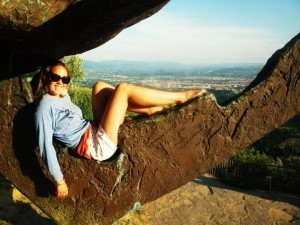 If you thrive off the fast-paced, high-pressured lifestyle which most big cities subject you to, then don’t even think about living in Italy; a country where the trains never run on time, shop owners enjoy three-hour lunch breaks, places close without warning and every meal is slow cooked certainly isn’t for everyone. It took me a while to adapt too, for I was initially impatient and irritated at the amount of time I felt I was wasting there, but then I gradually began to embrace what I like to call the ‘slow cooked’ way of living.
If you thrive off the fast-paced, high-pressured lifestyle which most big cities subject you to, then don’t even think about living in Italy; a country where the trains never run on time, shop owners enjoy three-hour lunch breaks, places close without warning and every meal is slow cooked certainly isn’t for everyone. It took me a while to adapt too, for I was initially impatient and irritated at the amount of time I felt I was wasting there, but then I gradually began to embrace what I like to call the ‘slow cooked’ way of living.
There were so many occasions during my stay in Italy where time would simply pass by without me being aware: slurping away on a Spritz and nibbling aperitivi in bars with friends, ambling along cobbled stone streets, enjoying a freshly baked pizza while watching the sun go down, practicing the language with strangers on rickety trains, sitting in the plaza and admiring handsome Italian men on the street behind a pair of shades…the list goes on and on. The place I spent the most time, however, was on the balcony of my very own apartment, where I would sunbathe and gaze out over the mountains while conversing in Italian with my dear old housemate, Tullio. Tullio is one of the kindest and most amazing people I’ve ever met, he taught me so much as well as helped me improve my Italian a great deal, and we always seemed to have plenty to talk about. We passed endless periods of time out there and, whereas it may not seem particularly exotic, when you have exceptional views and company, you really don’t feel the need to stray very far from your own living space.
As well as Tullio, I made many friends from various different countries and met a wonderful Italian family who took me under their wing and provided me with a room in exchange for taking care of their three gorgeous children. The kids liked to dress up in fancy dress costumes, sing, dance and draw and I would happily sit and mind them, assist them and compliment them on their artistic accomplishments. Indeed children require a lot of patience, especially when there are three of them and they range from the ages of two and seven, but I loved Lalo, Vicky and Sofia as if they were my own; no time spent in their company was ever dull or miserable.
My reason for going to Italy was to study at the University of Trento, which I picked for its good academic reputation, its proximity to the mountains and its size (large cities simply intimidate me too much). What I wasn’t expecting was to get a mild case of culture shock which would then transform into total acceptance of how this country runs. I stopped feeling like I was wasting time and began appreciating the small things, the times spent just enjoying the moment without feeling the need to always be ‘doing something’ and realising how being with wonderful people in a wonderful place is essentially all you need to feel satisfied.
Although I went to Italy to study Italian, I returned with not only a better knowledge of the language but of a whole new way of life; slow cooked. And I wouldn’t change that for anything.
About the Author: Camilla (Milly) Day is a lively, energetic person who tries to make the most of life. My favourite things include travelling, writing, food & wine, music, dancing and nature. I am currently working as English Content Manager for a travel agency based in Argentina, writing travel articles in English (and loving every minute of it).
Thank you for reading and commenting. Please enter our next Travel Writing competition and tell your story.
The post Slow Cooked in Italy appeared first on We Said Go Travel.
Toronto, Canada: Inspiring Place for a Poet
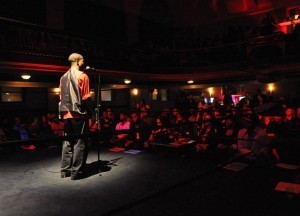 Many different places I’ve been to in my travels have been inspirations in my writings. One place that continues to come back to mind is Toronto, Ontario, Canada. Through being a performing poet and touring writer poetry has granted me the ability to travel to many cities across North America and I haven’t returned to any city as many times as I have Toronto. It is an extremely culturally and economically diverse city that will catch the awe of anyone who is new to being there.
Many different places I’ve been to in my travels have been inspirations in my writings. One place that continues to come back to mind is Toronto, Ontario, Canada. Through being a performing poet and touring writer poetry has granted me the ability to travel to many cities across North America and I haven’t returned to any city as many times as I have Toronto. It is an extremely culturally and economically diverse city that will catch the awe of anyone who is new to being there.
For an American, Toronto is the closest it will come to an American city outside of the United States but it is still very distinctly Canadian. The locals are very kind and helpful, and not too busy for someone unfamiliar with the area. Transit is another thing there that caught my eye. Cars and cabs frequent the city but natives of Toronto know how to effectively navigate their way around the metropolis using trolleys, trains, buses, bikes and their pair of adventurous feet. Although it is such a large city it doesn’t feel overwhelming being amongst all the hustle and bustle of it.
There are many artistic events and venues to see while there. One time I traveled to town I performed for the Toronto Poetry Slam at the Drake Hotel. The Drake is a lavish historical hotel and the theater style performance space they have for the poetry slam is both beautiful and very spacious. Another event I got to take part in was in the Great Hall theatre space in the downtown area. It was an innovative event as I’ve been in many poetry slams and events before, but this one was held in a boxing ring with Canadian celebrities as judges among many other elements. It was truly a spectacle not only as a participator in the show but for everyone present to watch the event. Seeing the city and the world from the perspective of the people who live there was definitely different, entertaining and interesting.
The diverse food is delicious. Everyone I had met in town suggested a dish called poutine to me. Very skeptical, I tried it and it ended up being gravy cheese fries very akin to American chilli cheese fries. The key difference is that there were many options you could have added to make it cater to your own tastes. For something more unique a friend took me out to eat at Addis Ababa. This Ethiopian food restaurant was not only very authentic but it was incredibly tasty and the staff was very generous and friendly.
It appeared to be generally peaceful there and an odd harmony existed between the people and animals. I saw pigeons walk the street amongst humans and squirrels fat from feeding walk right up to people if they were offering food. It isn’t a docile city at all though as on more than one occasion I’ve seen peaceful political protests in the streets of the city. There is definitely an interesting narrative going on within the lives of people living in Toronto. There is so much diversity and contrast happening between people that are merely feet away from each other.
When I’ve sat down to write I find these experiences and many others that I have had coming to mind. It is a second home to me, and I have revisited numerous times, finding something new on each venture. Toronto is definitely an inspiring city, seemingly having something for everyone and possessing many facets and sides to it.
About the Author: Deonte Osayande is a poet, performer and instructor from Detroit, Mi. His poems have appeared in over a dozen publications. He has toured across the United States and Canada, but when not traveling spends his time teaching creative writing to inner city youth.
Thank you for reading and commenting. Please enter our next Travel Writing competition and tell your story.
The post Toronto, Canada: Inspiring Place for a Poet appeared first on We Said Go Travel.
Luxury in Chiang Mai with AsiaRooms.com
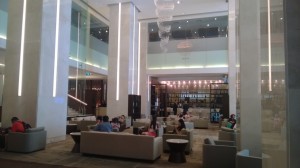
Lobby, Le Meridien, Chiang Mai, Thailand
After traveling in Asia for the last eighteen months, I have to admit Thailand is my favorite country. I love visiting new places, but I think I could live in Koh Samui or Chiang Mai. I hope that you have the chance to explore Chiang Mai!
Are you wondering where to sleep in Chiang Mai, Thailand? There are so many choices for hotels near or inside the old city walls. While we are traveling I often search on AsiaRooms.com to filter properties and discover gems for where to stay. If you are looking for luxury, art, culture and a view, my recommendation is Le Meridien Chiang Mai. The food at Latest Recipe is tasty and the café is open all day! I loved the pool, Plunge, and the Spa is very inviting! The view of the city from the 11th floor was fantastic and I enjoyed the specially selected music around the property.

Le Meridien Chiang Mai
We went for dinner and drinks with friends and enjoyed the live music at Riverside Bar, which has a bar, boat and annex. There is always a space for you on one side of the road or the other. Our large table under some trees was a perfect spot to chat with traveling friends and listen to music on a Saturday night. Another night, we went to the mall to see a movie, which was a great treat!
You can get nearly everything done in Chiang Mai. We applied at the Indian Consulate for visas and went to the dentist. I enjoyed the shopping and the food at the Sunday Night Market. There are many streets to explore and discover all the Wats. I enjoyed visiting Doi Sutep, which George called, “Thailand’s Shwedagon Pagoda.” There is culture, shopping and many other towns nearby to explore. We have visited Chiang Rai, Pai, Mae Hon Son and Chiang Saen. I can recommend them all to you after you have had time to explore Chiang Mai.
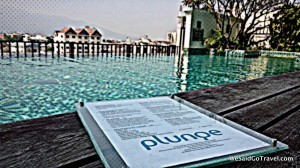
Le Meridien Chiang Mai
I can recommend a few spots for great food: The Hut on Soi 6 has big portions and reasonable prices. Peppermint on Soi 5 is a lovely place with great food and very friendly service. If you are looking for great vegetable dishes, fresh baked bread and cookies go to Soi 9 for food at Blue Diamond.
We are always looking for a great fruit shake and found the Shake Lady on Soi 7! And Nice Kitchen on Soi 6 (which is closed on Mondays) has an excellent and large breakfast!
Speaking Thai is challenging. Languages with tones are not easy for me. When I try to speak Mandarin in China, often someone will look at me and say, “Sorry I do not speak English” and George will say, “She is not speaking English.” I am making progress in Thai and George has learned so much that he recently impressed our new friends in Koh Lipe with his ability to have a conversation although it was mainly to order dinner!
Wherever you decide to travel in Thailand, I am certain you will enjoy your explorations! Let us know what favorites you find! We thank Le Meridien Chiang Mai and AsiaRooms.com for inviting us to enjoy a wonderful time in Chiang Mai!
The post Luxury in Chiang Mai with AsiaRooms.com appeared first on We Said Go Travel.
We Said Go Travel
We Said Go Travel is a global community of over sixteen hundred writers with articles from every continent.
Stories are shared with photos and video from a perspective of the transformative power of travel. We Said Go Travel has hosted live and online events as well as travel writing contests around the world. ...more
- Lisa Niver's profile
- 57 followers



